H'mong King's Palace: Unique Cultural Heritage of the Stone Plateau
An Overview Of H'mong King Palace
Nestled amidst the breathtaking scenery of Dong Van Karst Plateau Geopark, the H'mong King Palace, also known as the Vuong family's mansion or the Meo King's Palace, is a testament to the rich cultural heritage of the H'mong people. It creates an airy space, enough to see the appeal of the unique architectural design style of the Hmong people. Today, many people have also visited and rated the palace as one of the famous tourist destinations.
Who Is H'mong ?
The H'mong, alternatively referred to as the Meo people, constitute one of Vietnam's most prominent ethnic minority groups, boasting a population exceeding 1.3 million individuals. They predominantly dwell amidst the rugged terrains of northern Vietnam, particularly within provinces like Ha Giang, where the illustrious H'mong King Palace stands in majesty and they also contribute significantly to the cultural tapestry of the region.
You know, this ancient mansion has always been associated with the careers and lives of two H'Mong people, Vuong Chinh Duc and Vuong Chi Thanh. Vuong Chinh Duc is also known as the Cat King. Worshiped by the people, he was elected king and managed the four major districts of Ha Giang such as Quan Ba, Yen Minh, Dong Van and Meo Vac. As for his son - Vuong Chi Thanh, he chose the revolutionary path again, served his country and fatherland, and was elected as a member of the National Assembly for the first two terms.
Renowned for their cultural heritage, the H'mong people have with their exuberant traditions, resplendent traditional attire, and unique agricultural techniques that have sustained them across generations. Their presence enrichs the cultural picture of the nation's distinct identity and traditions.
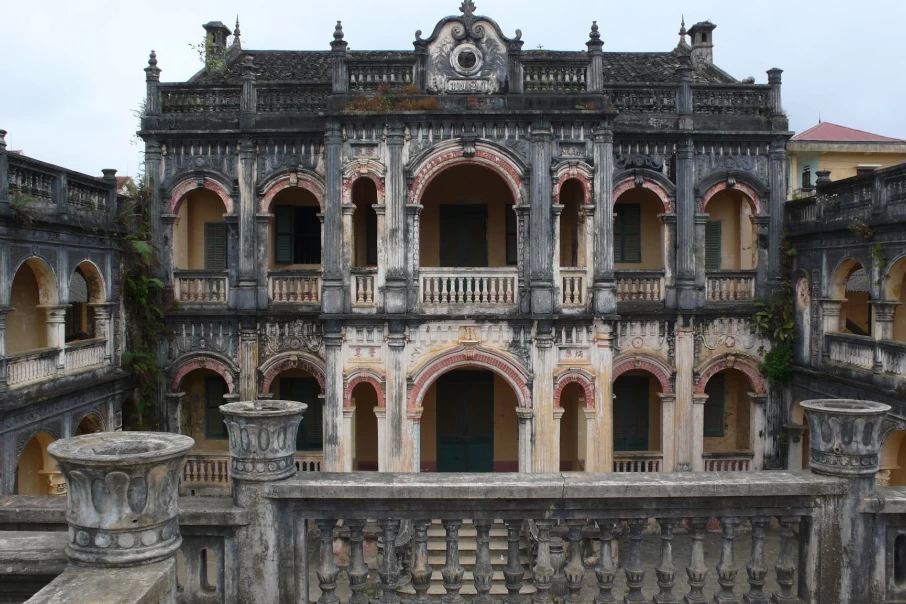
King Meo's mansion is associated with the life of Vuong Chinh Duc
Where Is H'mong King Palace?
Nestled within the serene landscapes of Sa Phin Valley, amidst the verdant expanse of Lung Phin commune in Dong Van district, Ha Giang province, Vietnam, lies the illustrious H'mong King Palace. The architectural wonder of the H'mong King Palace is one of the clearest examples of the rich heritage and cultural significance of the Hmong people in the region.
Located only about 125 km from Ha Giang city center, the palace contains a peaceful atmosphere for anyone who wants to escape from the hustle and bustle of the city. It is ready to wave to welcome tourists, immersing themselves in the beauty of the countryside. This mansion was listed as a national monument on July 23, 1993. H'mong King’s mansion is located right near Highway 4C on the road from Ha Giang city to Dong Van.
This monument has created a new attraction, attracting tourists as well as those who are passionate about discovering the mysterious, majestic and meaningful. The journey you take to H'Mong King's Palace is an interesting journey, helping you explore ancient architecture and see a breathtaking natural picture with undulating hills, green valleys and surrounding mountain roads.
Upon arrival, visitors are greeted by the palace's imposing facade, which features traditional Hmong architecture with exquisite craftsmanship. The house has 4 horizontal houses, 6 vertical houses and up to 3 palaces: Tien, Middle, Hau. If it could accommodate about 100 people with 64 available rooms. The wall material is completely made of stone, the roof and walls are made of wood, and the tiles are made of terracotta. The building's architecture is a combination of Chinese culture, French art and exquisite Chinese patterns.The Mong King's Palace is not only a heritage kept from generation to generation but also a small window into the life of this community. Here, the persistent and resilient spirit of the H'mong people still shines, enriching Vietnamese culture.
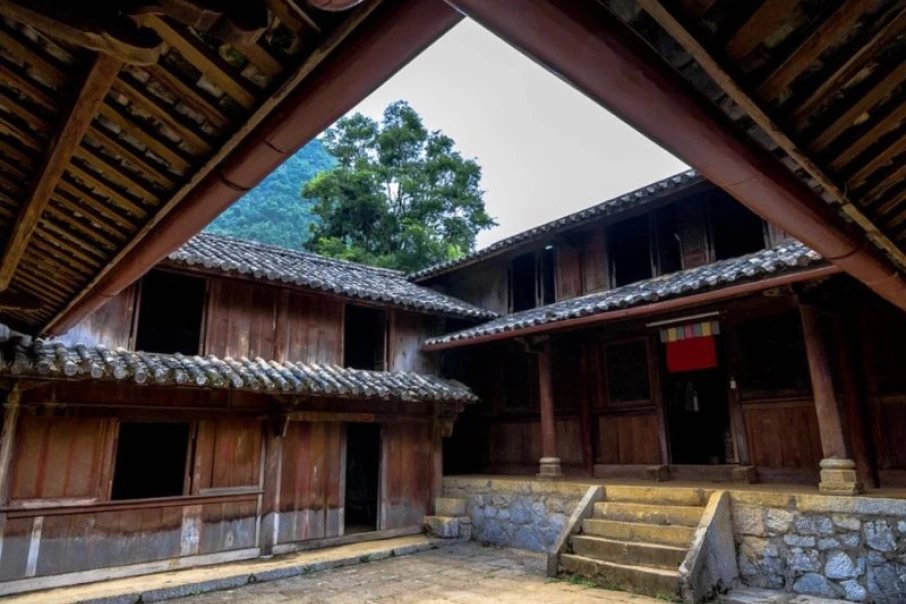
H'mong King Palace
Opening hours & Ticket Price
The H'mong King Palace welcomes visitors daily, offering a window into the rich cultural heritage of the H'mong people from 8:00 AM to 5:00 PM. This generous schedule allows travelers ample time to explore the palace's treasures, soak in its historical ambiance, and immerse themselves in the captivating stories of generations past.
As visitors approach the entrance, they are greeted by the imposing gates of the palace, inviting them to embark on a journey through time. Upon purchasing a ticket, priced at a modest 25,000 VND, travelers gain access to the palace grounds and its myriad attractions.
Once inside, visitors are greeted by the majestic architecture of the palace, a testament to the H'mong people's rich cultural legacy and royal lineage. The intricate craftsmanship and ornate detailing of the palace's interiors offer a glimpse into the opulence and grandeur of bygone eras.
Throughout their visit, guests have the opportunity to explore the palace's various chambers, halls, and courtyards, each revealing facets of H'mong history, tradition, and daily life. From ceremonial halls adorned with ancestral altars to living quarters preserved in their original state, every corner of the palace tells a story, weaving together the tapestry of H'mong culture and heritage.
Moreover, visitors can engage with knowledgeable guides stationed throughout the palace, who offer insights into its history, architecture, and significance within the H'mong community. Guided tours provide a deeper understanding of the palace's significance and its role in preserving H'mong traditions for future generations.
As the sun sets over Sa Phin Valley, visitors bid farewell to the H'mong King Palace, carrying with them memories of an enriching cultural experience and a deeper appreciation for the resilience and spirit of the H'mong people.

Buy tickets to visit the Hmong King Palace
Construction History and Context
The H'mong King's Palace, also known as the Vuong family mansion, was constructed between 1898 and 1903 by Vuong Chinh Duc, the head of the most powerful Hmong family in the region at the time. While the Hmong people traditionally lacked a unified centralized system of governance, the French colonial administration, seeking to consolidate control and facilitate tax collection, recognized Vuong Chinh Duc as the official "King" of the Hmong in the early 20th century.
This period of French-backed leadership, however, was short-lived. Following Vietnam's independence in 1945, the monarchy was abolished, and the palace became a national relic in 1993. The palace's architectural style reflects a unique blend of influences, with elements not Vietnamese but Chinese and French of the time.
The project has a construction area of 3000 square meters, but when you look at it, it doesn't look too big. It's completely homely, rustic and simple. When you go inside, you will see that the design is quite low, the furniture is quite old, and this is also the furniture that King Cat used when he was alive. The tables and chairs will be made of wood such as stone pine, ironwood and wood chips. Wooden structures imbue local cultural identity through carvings of native flower motifs such as peaches, poppies.
However, the dominant architectural style is distinctly European, particularly French colonial. The palace features a symmetrical layout, a red-tiled roof, large windows with shutters, and decorative balconies, reminiscent of French Baroque villas. It can be said that this is a general reflection of the combination of exchange and cultural influence between the Mong people and the French colonial government of that period.

Construction History and Context of H'mong King's Palace
How To Get To H'mong King Palace?
Reaching the H'mong King Palace requires a scenic journey through the mesmerizing landscapes of the Dong Van Karst Plateau Geopark. Here are a few options for getting to the palace:
By motorbike
This is a popular option for adventurous travelers, offering stunning views and flexibility. Renting a motorbike and following the scenic route through the geopark is a thrilling experience. However, be aware of challenging road conditions and ensure you possess a valid motorbike license. To travel by motorbike from the city center, you go towards Quan Ba heaven gate, cross Yen Minh pine forest and then turn onto Tham Ma slope on the right to enter Highway 4C. Then see the intersection in Sa Phin commune, turn right and move about 3 km more to get there. The Vuong Dynasty mansion relic area will be on the left in the direction you move.
By private car
Hiring a private car with a driver provides a comfortable and convenient mode of transportation, especially for larger groups or those seeking a more relaxed travel experience.
By joining a tour
Participating in a guided tour is an excellent option for those seeking a hassle-free experience and the benefit of knowledgeable guides who can share insights into the history and cultural significance of the palace and the surrounding region.

Take a motorbike to Hmong King's Palace
What’s The Best Time To Visit H'mong King Palace?
Are you wondering when to visit the H'mong King Palace? You need to consider factors such as weather, budget, means and content you need to know. Some suggestions for you to plan your trip:
1. Pleasant Weather and Comfortable Exploration
Optimal Months: March to May and September to November
During these periods, the weather is often mild and pleasant, creating ideal conditions for leisurely exploring the palace and surrounding areas. With pleasant temperatures and minimal rainfall, visitors can fully immerse themselves in the beauty of the landscape, along with the ancient historical beauty of the Hmong King Palace, without feeling uncomfortable from the sun's intense heat or inclement weather.
2. Cultural Immersion and Festive Celebrations
Ideal Timing: December (During Hmong New Year Celebrations)
For travelers seeking an authentic cultural experience, planning a visit during the Hmong New Year celebrations in December presents a unique opportunity to immerse oneself in the vibrant traditions and festivities of the Hmong people. During this time, the palace and its surroundings come alive with colorful ceremonies, traditional dances, and spirited gatherings, providing an unparalleled glimpse into the rich cultural heritage of the Hmong community.
3. Scenic Beauty and Captivating Landscapes
Recommended Season: Dry Season (November to April)
Encompassing the renowned Ha Giang Loop, which includes the H'mong King Palace, the dry season offers the most breathtaking vistas and picturesque landscapes. With clear skies and lush, verdant rice terraces, this period showcases the region's natural beauty in all its splendor, creating a truly mesmerizing backdrop for exploration and adventure. Travelers embarking on the Ha Giang Loop during this time can expect unparalleled panoramic views and unforgettable moments amidst the stunning scenery.
By considering these factors and tailoring your visit to your preferences. Or whenever you have time, you can still schedule a trip now to quickly experience new things at the Hmong King Palace, immersing yourself in the beauty, culture and heritage of this charming destination.
Explore H'mong King Palace
Overall Design
Constructed during the late 19th century, the H'mong King Palace stands as a remarkable testament to the cultural heritage and architectural ingenuity of the H'mong people. This architectural masterpiece seamlessly blends an array of influences, showcasing a captivating fusion of styles that reflects the region's rich history and cultural diversity.
At first glance, the influence of the Qing Dynasty is unmistakable, evident in the intricate details and materials used in the palace's construction. The use of green pebbles, sourced from local riverbeds, lends a distinctive aesthetic charm to the exterior walls, while the sturdy pine wood beams and terracotta tiles evoke a sense of timeless elegance and durability.
Comprising six majestic two-story wooden houses, the palace complex exudes an air of grandeur and sophistication, each structure adorned with traditional Hmong motifs and carvings that pay homage to the community's rich artistic heritage. From intricately crafted patterns adorning doorways and eaves to symbolic motifs etched into wooden beams, every aspect of the palace's design reflects the deep spiritual and cultural significance embedded within H'mong tradition.
As visitors traverse the expansive grounds of the palace, they are enveloped in a symphony of architectural styles, where elements of Chinese influence seamlessly intertwine with indigenous H'mong craftsmanship. The result is a harmonious blend of cultural identities, creating a space that transcends time and geography, inviting visitors to delve into the rich tapestry of H'mong history and heritage.
Beyond its architectural splendor, the H'mong King Palace serves as a living testament to the resilience and cultural pride of the H'mong people, preserving their traditions and customs for generations to come. It stands as a beacon of cultural identity, inviting visitors to explore the depths of H'mong culture and history while marveling at the timeless beauty of its architectural design.
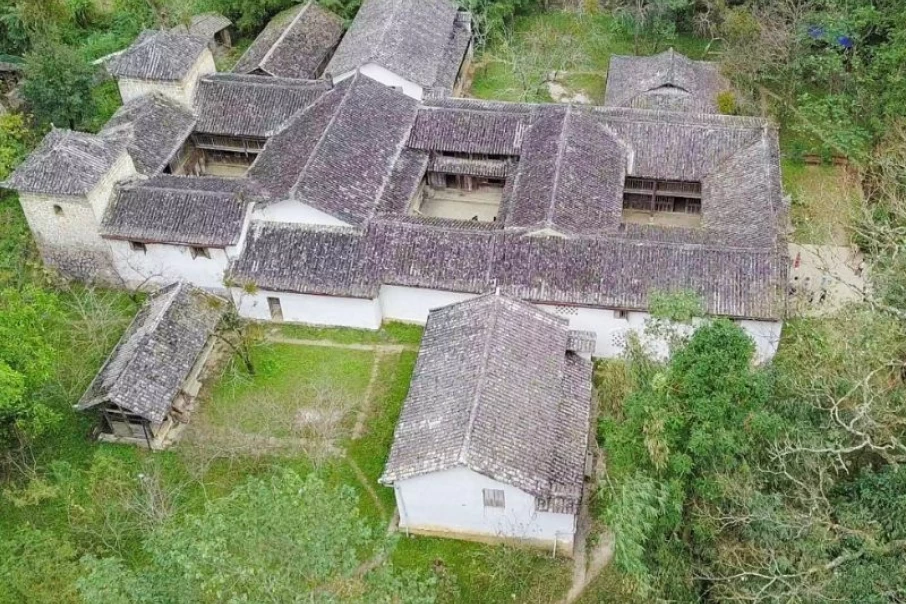
Panorama of the H'Mong King's Palace
Interior
When you cross the threshold of the Hmong King's Palace, you are immediately enveloped in a world of timeless luxury and historical intrigue. The internal structure is meticulous, all ancient furniture has been preserved in many sealed boxes in the most meticulous way. That will help you understand more about the ancient lifestyle of the Vuong family and the rich cultural heritage of the H'mong people.
Every corner of the palace is adorned with a treasure trove of artifacts, each whispering tales of bygone eras and long-forgotten customs. From ornately carved wooden furniture to intricately embroidered textiles, every object tells a story, weaving together the tapestry of H'mong history and tradition.
As you wander through the labyrinthine corridors and chambers of the palace, you are transported back in time, immersing yourself in the daily rhythms of life within its hallowed walls. Each room is a veritable time capsule, meticulously curated to evoke the ambiance of a bygone era.
In the grand reception halls, opulent furnishings and lavish decor reflect the prestige and power of the Vuong family, while intimate chambers offer glimpses into the more personal aspects of their lives. Here, you may encounter traditional costumes adorned with vibrant hues and intricate patterns, alongside everyday objects that once filled the halls with laughter and conversation.
Each room within the palace serves as a window into the past, offering poignant insights into the customs, traditions, and cultural practices of the H'mong people. From the elaborate rituals of daily life to the solemn ceremonies that marked life's milestones, every aspect of H'mong culture is brought to life within these hallowed halls.
As you traverse the palace's hallowed halls, you cannot help but be awed by the richness and depth of H'mong heritage that permeates every corner of this architectural marvel. It is a testament to the enduring legacy of the Vuong family and a poignant reminder of the resilience and cultural pride of the H'mong people.
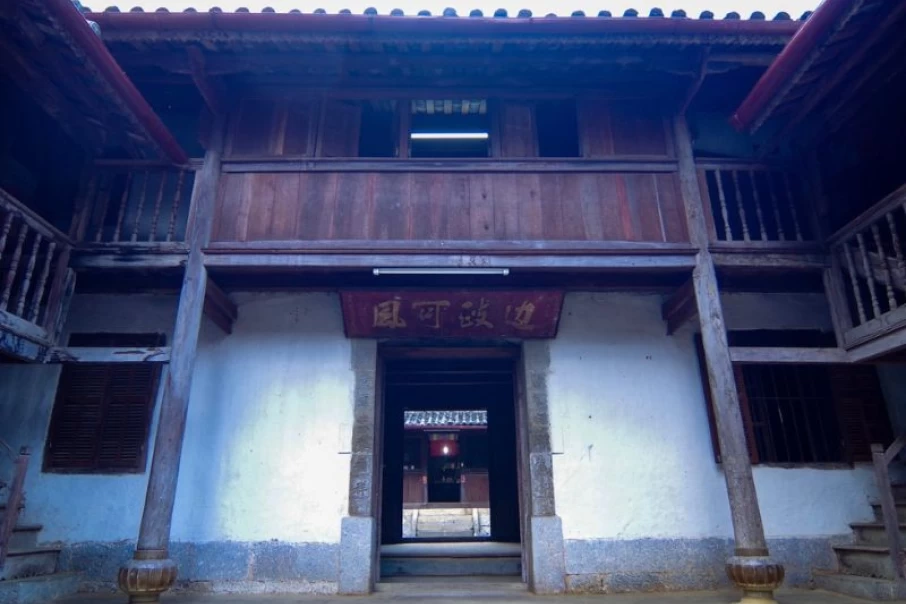
Interior H'mong King Palace
Interesting facts
The palace was originally the residence of Vuong Chinh Duc, the head of the Vuong family, who was recognized as the king of the Hmong people in the early 20th century.
The Vuong family ruled over the Quan Ba, Yen Minh, Meo Vac, and Dong Van districts of Ha Giang province. The palace is a controversial landmark, with some questioning the legitimacy of the Vuong family's claim to royalty. However, it remains a significant cultural and historical site for the Hmong people.
Anecdotes Of H'mong King Palace You Need To Know
Embedded within the annals of H'mong folklore lies the legend of the Vuong family and their fabled sword, a mystical artifact said to bestow upon its wielder unparalleled power and authority. According to ancient tales passed down through generations, the Vuong family's rise to prominence was attributed in part to the mystical properties of this legendary weapon, which imbued them with the strength and influence to govern their realm with an iron fist.
The construction of the H'mong King Palace, steeped in history and tradition, is said to have been a labor of love spanning several years. Skilled artisans, revered for their mastery of traditional techniques, painstakingly crafted each component of the palace with meticulous precision and unwavering dedication. From the intricately carved wooden beams to the handcrafted terracotta tiles adorning the rooftops, every detail bore the indelible mark of their craftsmanship, transforming the palace into a veritable masterpiece of architectural ingenuity.
However, the legacy of the Vuong family is not without its complexities. During the tumultuous era of French colonial rule, the Vuong family found themselves embroiled in a delicate dance of power and politics. Seeking to navigate the treacherous waters of colonial domination, they forged alliances with the French authorities, leveraging their influence to safeguard their interests and preserve their autonomy. Yet, this collaboration has left a lingering sense of ambivalence among the H'mong people, who grapple with conflicting sentiments regarding the legacy of their erstwhile rulers.
For some, the collaboration with colonial forces is viewed as a pragmatic strategy employed to safeguard the interests of the H'mong community amidst the shifting tides of history. Others see it as a betrayal of H'mong principles and a stain on the honor of the Vuong family. Thus, the legacy of the Vuong family remains a subject of debate and discussion, reflecting the nuanced complexities of H'mong history and identity.
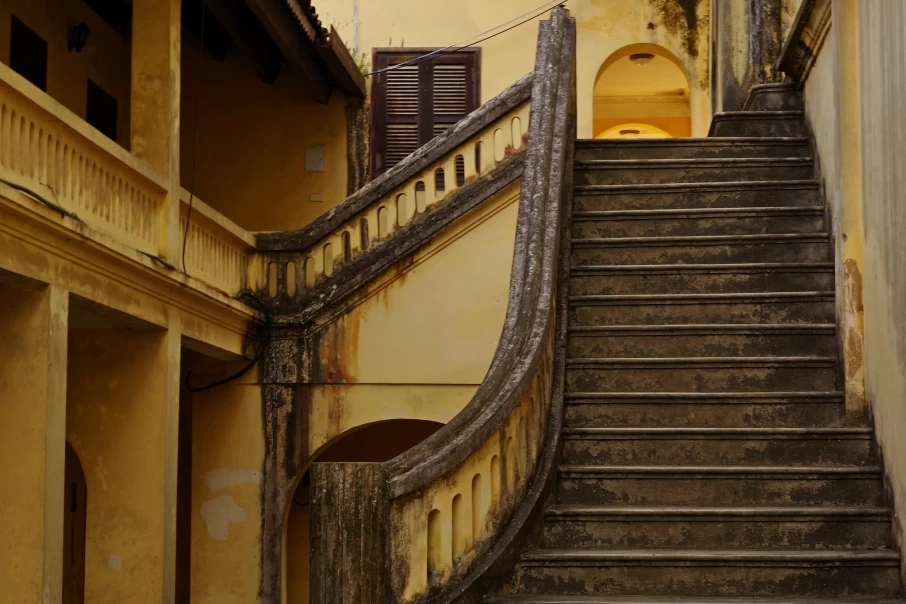
The construction of the H'mong King Palace steeped in history and tradition
Where To Stay When Visiting H'mong King Palace?
Nestled amidst the rugged beauty of the Dong Van Karst Plateau Geopark, a plethora of homestays and guesthouses await travelers seeking an authentic immersion into the local culture and hospitality. Situated in close proximity to the H'mong King Palace, these charming accommodations offer a unique opportunity to experience life in the heart of H'mong territory, where tradition meets modernity in a harmonious blend of past and present.
For those eager to embrace the warmth and camaraderie of H'mong village life, homestays provide an unparalleled opportunity to connect with local families and partake in age-old customs and traditions. From sharing meals prepared with locally sourced ingredients to participating in cultural activities such as traditional music and dance, guests are welcomed into the fold with open arms, fostering meaningful exchanges and lasting friendships.
Meanwhile, guesthouses offer a more structured yet equally enriching experience, with comfortable amenities and personalized services catering to the needs of discerning travelers. Whether nestled amidst the rolling hills of Lung Phin commune or perched on the outskirts of Dong Van town, these cozy retreats serve as a home away from home, providing a tranquil sanctuary for weary adventurers to unwind and recharge.
For those seeking a wider array of amenities and services, the nearby town of Dong Van boasts an array of hotels and resorts, catering to every budget and preference. From boutique accommodations exuding rustic charm to modern establishments offering luxurious comforts, there's something for everyone in this bustling hub of activity.
Whether you choose to immerse yourself in the rustic simplicity of a homestay or indulge in the creature comforts of a hotel, one thing is certain – your stay near the H'mong King Palace promises to be an unforgettable journey filled with warmth, hospitality, and the timeless allure of H'mong culture. So pack your bags, embark on an adventure, and prepare to create memories that will last a lifetime in the enchanting landscapes of Ha Giang province.
Worth-Visiting Attraction Near H'mong King Palace
Beyond the historical significance of the palace itself, a visit to the H'mong King's Palace can be seamlessly combined with exploring the surrounding region's captivating beauty and rich cultural tapestry. Here are some nearby attractions that shouldn't be missed:
Dong Van Old Quarter: Located just 15km from the H'mong King Palace, Dong Van Old Quarter is a charming and well-preserved town nestled amidst the majestic mountains. Explore the narrow cobblestone streets lined with traditional houses, visit the Dong Van Market, and soak in the unique atmosphere of this historical town.
Ma Pi Leng Pass: Often referred to as the "Heaven's Gate," Ma Pi Leng Pass is a breathtaking mountain pass offering panoramic views of the surrounding valleys and the Nho Que River. Take a motorbike ride along the scenic route, stopping at viewpoints to capture the stunning scenery.

Ma Pi Leng Pass
Hoang Su Phi Terraced Fields: Renowned for their beauty, the Hoang Su Phi Terraced Fields are a UNESCO World Heritage Site. These cascading rice paddies sculpted into the mountainsides are a testament to the ingenuity and hard work of the local people. Visit during the planting or harvesting season to witness the fields in their full glory.
Yen Minh pine forest: You can conveniently visit a pine forest nestled and completely covered with green. This is a place going to the Northeast about 100 km from Ha Giang.

Yen Minh pine forest
Tips For Visiting H'mong King Palace
Embarking on a journey to explore the storied halls of the H'mong King's Palace is a venture into the heart of history and culture. To ensure your visit is as enriching and rewarding as possible, here are some indispensable tips to guide you along the way:
1. Plan Your Transportation: Nestled amidst the remote and captivating landscapes of Ha Giang province, embarking on a journey to the H'mong King's Palace demands careful consideration of transportation options. For a guided and insightful exploration, contemplate joining a tour led by locals who possess intimate knowledge of the region's terrain and cultural heritage. These guides can offer valuable insights into the history and traditions of the area, enriching your experience along the way. Alternatively, opting to rent a motorbike provides a sense of freedom and flexibility, allowing you to traverse the winding roads at your own pace. However, it's essential to familiarize yourself with the route beforehand and exercise caution to ensure a safe and enjoyable journey.
2. Dress Respectfully: Embrace the solemnity of the occasion as you ready yourself for the visit by adorning attire that pays homage to the revered stature of the palace. In acknowledgment of its sacred status among the local H'mong populace, select garments that exude modesty and veneration. Option for clothing that ensures your shoulders and knees are appropriately covered, abstaining from any attire that may inadvertently appear immodest or disrespectful, thus upholding the sanctity and dignity of the revered site.
3. Be Mindful of Your Surroundings: Amidst the rugged terrain that envelops the palace, it's imperative to equip yourself with sturdy footwear to traverse the undulating landscapes safely. Exercise a heightened sense of mindfulness as you meander through the labyrinthine chambers and expansive courtyards, remaining vigilant to potential pitfalls such as uneven steps or slick surfaces. Take pause to appreciate the exquisite nuances of the architectural marvels that adorn the landscape, allowing yourself to become fully ensconced in the rich tapestry of history that breathes life into the surroundings.
4. Hire a Guide: Enrich your exploration by enlisting the services of a seasoned local guide who possesses an intimate understanding of the palace and its surroundings. A proficient guide is not merely a purveyor of facts but a storyteller, weaving narratives that breathe life into the history and culture of the region. With their insightful commentary and nuanced perspective, they offer a gateway to a deeper understanding of the palace's significance within the intricate fabric of H'mong heritage. Allow yourself to be guided on a journey of discovery, where each step unveils layers of the past and illuminates the timeless allure of this revered cultural landmark.
5. Respect the Local Culture: Embrace the opportunity to immerse yourself in the rich tapestry of local culture as you enter the sacred confines of the palace. Cultivating a deep sense of reverence and openness, acknowledge the profound significance of the customs and traditions upheld by the local community. Approach each encounter with humility and genuine curiosity, seeking to glean insights and wisdom from the perspectives of those you engage with. By wholeheartedly embracing and respecting their cultural heritage, you not only pay homage to the legacy of the past but also forge authentic connections that transcend boundaries and foster mutual understanding and appreciation.
By heeding these tips, you'll not only maximize your enjoyment of the H'mong King's Palace but also cultivate a deeper appreciation for the timeless beauty and profound significance of this cherished cultural landmark. So, with an open heart and a spirit of adventure, set forth on your journey and prepare to be captivated by the wonders that await you amidst the majestic landscapes of Vietnam's northern highlands.
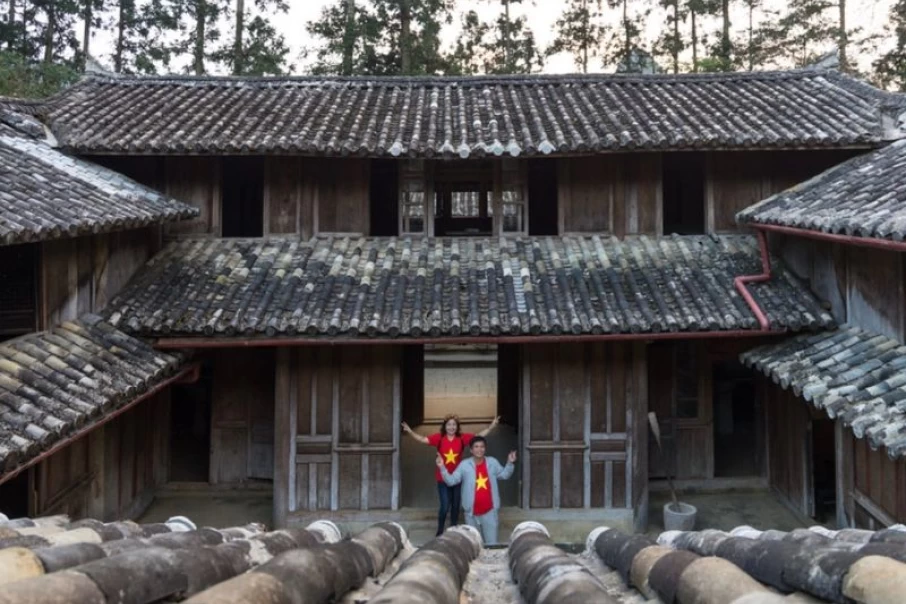
Dress politely when visiting the Mong King Palace
Some important notes when coming to H'mong King Palace
When visiting, you will be able to visit the main gate area, main house area, sleeping spaces, and worship space. Please note that you should not make loud noises, be noisy or laugh because it will affect other visitors. You can take commemorative photos with each area you visit.
Be careful with the roads, the mountain terrain is quite dangerous and winding. When traveling by motorbike, choose a well-maintained vehicle and check the route in advance to have an easy trip.
Because the weather in Dong Van Plateau is quite erratic. Sometimes there will be heavy rains, so please equip yourself fully with raincoats and personal items to avoid catching a cold.
Do not touch the artifacts, these are all cultural relics owned by the state, so visitors should be careful not to touch or touch the artifacts.
The Ha Giang Loop : A 8 - Day Road Trip
- Depart Time:Daily
- Starts/Ends:Hanoi/Hanoi
- Tour type:Private Tours
- Travel Style:Nature & Adventure, Culture & History
- Suitable for:Family, Group, Couple
- Age range:5 To 80 Years, 1 To 90 Years
- Operated in:English, French, Spanish, German, Italian
Conclusion
Taking a sightseeing tour to the H'mong King Palace will help you have interesting experiences. You will also gain more historical knowledge about the palace as well as create many memorable photos. By following these tips and embracing the local culture, you can ensure a memorable visit to this captivating landmark.
Get ready to visit Vietnam tours packages with Asia Tour Advisor and bring the best memories home!
You may also like

Vietnam travel tips - The pathway to a perfect trip
Traveling to a new place especially for the first time can be quite demanding, due to human anxiousness...

Is Vietnam safe to travel? An advice to upcoming travelers
It is trite knowledge that Vietnam has some of the most beautiful and breathtaking landscapes as well...

A guide to choose between Private tours and Group tours
It is often a challenge deciding between a private or a group tour, especially for first timers. Some...
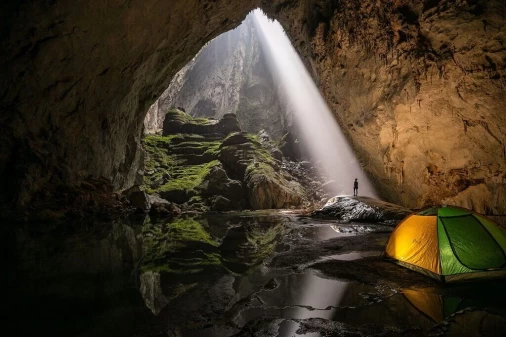
Central Vietnam Itinerary - An amazing Guide to the Perfect Tour
Having on standby the right key to navigate through central Vietnam is like a dream come true especially...
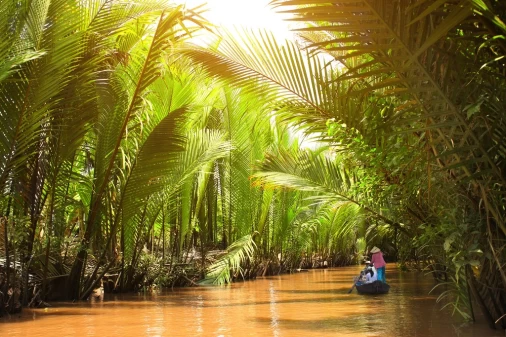
South Vietnam Itinerary- A treat to an impeccable beauty
Explore the Southern part of Vietnam as you treat yourself to the best parts only. Get to experience...

North Vietnam Itinerary - A comprehensive Guide to explore the North
Northern Vietnam is a region of aesthetic sceneries and landscapes with practically fascinating cultures...
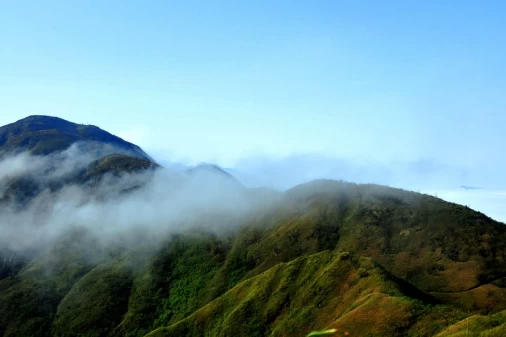
Fansipan Mountain - A solemn structure of Vietnam’s pinnacle
Explore an exciting journey with either a cable car or by hiking as you rise about 3,143 meters above...
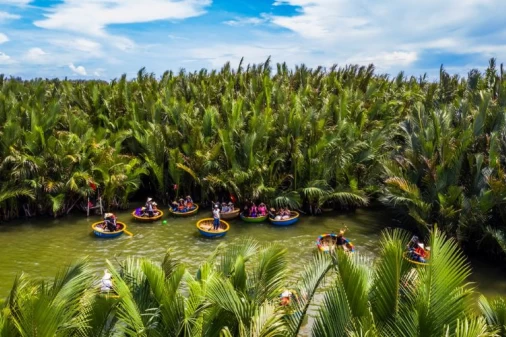
Bay Mau Coconut Forest - A fast rising destination for tourists
Bay Mau coconut forest is a very famous ecotourism site in Hoi An as well as the whole of Vietnam. It...
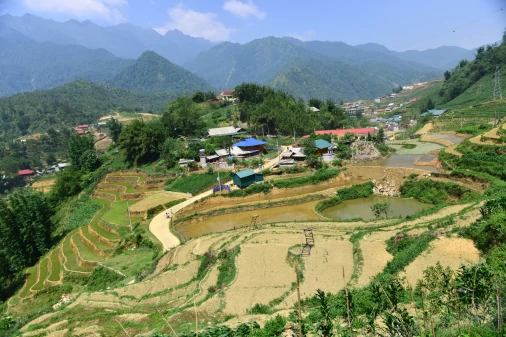
Y Linh Ho Village - Navigating The Charming North of Vietnam
Y Linh Ho village is a destination that is absolutely unique amongst the various tourist attractions...
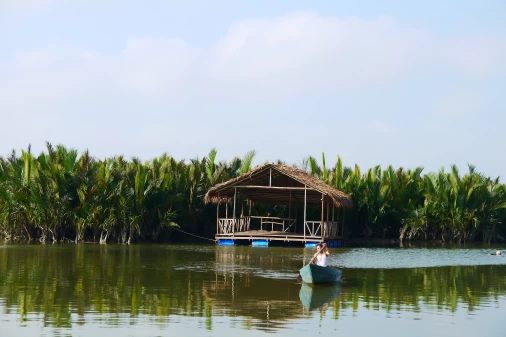
Explore Cam Thanh coconut village - The most exciting place in Hoi An
A breathtaking countryside located about 3 km from Hoi An, Cam Thanh coconut village is a definite place...
 France
France  Spain
Spain  German
German  Italian
Italian 


 Vietnam Tours
Vietnam Tours  Cambodia Tours
Cambodia Tours  Myanmar tours
Myanmar tours  Thailand Tours
Thailand Tours  Laos Tours
Laos Tours